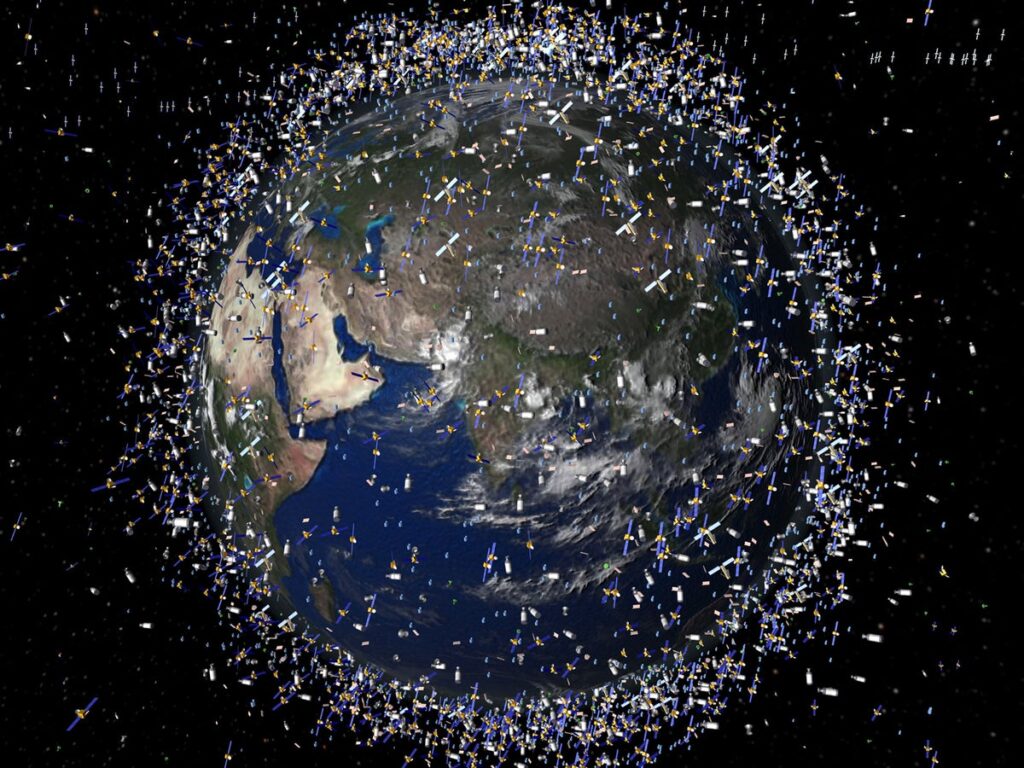Space Junk

If you’re interested in what’s going on in space, you may have heard that a defunct Chinese satellite came dangerously close to colliding with the International Space Station, which was only averted when the ISS manoeuvred out of the path. While the incident was enough to reignite the discussion over space trash, a new research has discovered that the Earth may soon have Saturn-like rings — but made of space debris! And if that isn’t bothersome, we’re not sure what is.
Here’s some background information for you. According to NASA, the US Department of Defense’s global Space Surveillance Network (SSN) sensors are detecting approximately 27,000 bits of space trash, or “orbital debris” as it is officially known. We get what you’re thinking — 27,000 pieces in such a large space? That isn’t too awful. However, because they are components in the near-Earth space environment, it is. There are also many more bits that come near to Earth but are too small to be monitored. However, they are huge enough to pose a threat to “human spaceflight and robotic missions.”
According to NASA, orbital debris and spacecraft both fly at around 15,700 mph in low Earth orbit, so even a little piece of space trash may do significant damage if it collides with a spacecraft. According to NASA, “the growing population of space debris raises the potential hazard to all space vehicles, including the International Space Station and other spacecraft with humans aboard, such as SpaceX’s Crew Dragon.”
Explanation of Space Junk

“Any human-made object in orbit around the Earth that no longer performs a useful role is known as orbital trash.” Nonfunctional spacecraft, abandoned launch vehicle stages, mission-related junk, and fragmentation debris are examples of this type of debris, according to NASA.
With space junk travelling at such high speeds, not only does the International Space Station (ISS) and rockets require quick manoeuvres, but scientists must also ensure that new satellites have a quick automated response to detect and avoid collision with orbital debris, or millions of dollars in investments will vanish into thin air, literally.
Concerns about space trash have grown since a dormant Russian spacecraft collided with an operating US satellite in 2009 while travelling at speeds of roughly 22,300 mph, resulting in thousands of pieces of microscopic debris.
Space debris not only pollutes space (which, honestly, should be free of the ill-effects of human existence), but it also sets in motion a vicious cycle. Orbital debris can crash with other human-made items, resulting in further debris, all of which can be harmful when flying around in space. Not only that, but the debris is likely to crash with other celestial objects as they pass through the Earth’s orbit, causing harm to them.
Recognizing the challenge, however, an increasing number of space agencies and organisations are attempting to find a solution.
Japan dispatched an experimental space junk “collector” a few years ago, which would gather fragments of space trash and transport them to the Earth’s atmosphere, where they would be destroyed. However, when the spacecraft’s tether failed to deploy, the experiment failed.
Not to be disheartened, Japan’s Astroscale launched a demonstration spacecraft earlier this year that would find and collect used satellites and other space trash. A contract for a 2025 mission to catch and dispose of a piece of space debris using a four-armed claw has also been finalised by the European Space Agency.
One thing that irritates us is that, while some commercial firms are worried about space and cosmic pollution, NASA’s attention on space garbage is limited to its impact on satellites and spacecraft. Though this is a valid worry and an essential one in light of the growing number of space research missions, it is not the only one, nor should it be the most significant.
The fundamental concern is that, like the Earth, too much junk or garbage might generate a cosmic imbalance, at least in the vicinity of the Earth, Moon, and Mars, where the majority of the exploration missions are now going. Every year, an estimated 400 bits of space trash (extremely small particles) fall to Earth, but bigger pieces of debris are currently floating around as well. While such trash is now relatively innocuous, if it accumulates in great numbers, it can cause severe issues in the functioning of the solar system. Right now, air pollution on Earth is obstructing our view of the sky, but who knows — one day, we could simply see a whole bunch of space debris in the sky! Due to its near closeness to our planet, it may also disrupt the equilibrium between Earth and space, perhaps resulting in the extinction of all life on the planet. We already know that life-sustaining circumstances are uncommon, and that any alteration can tilt the scales. Is space debris the hill we want to die on, or is it the hill we want to die on?




